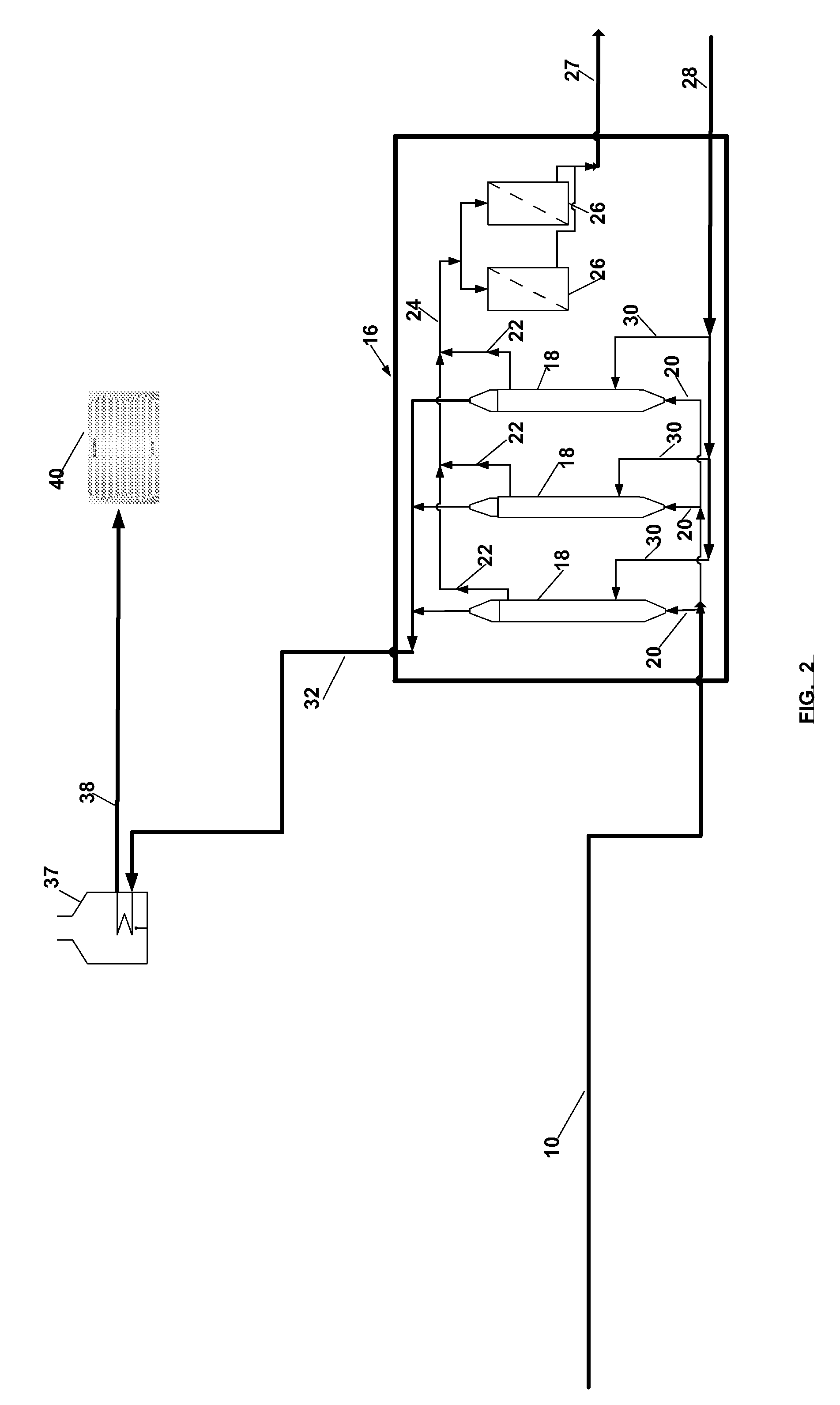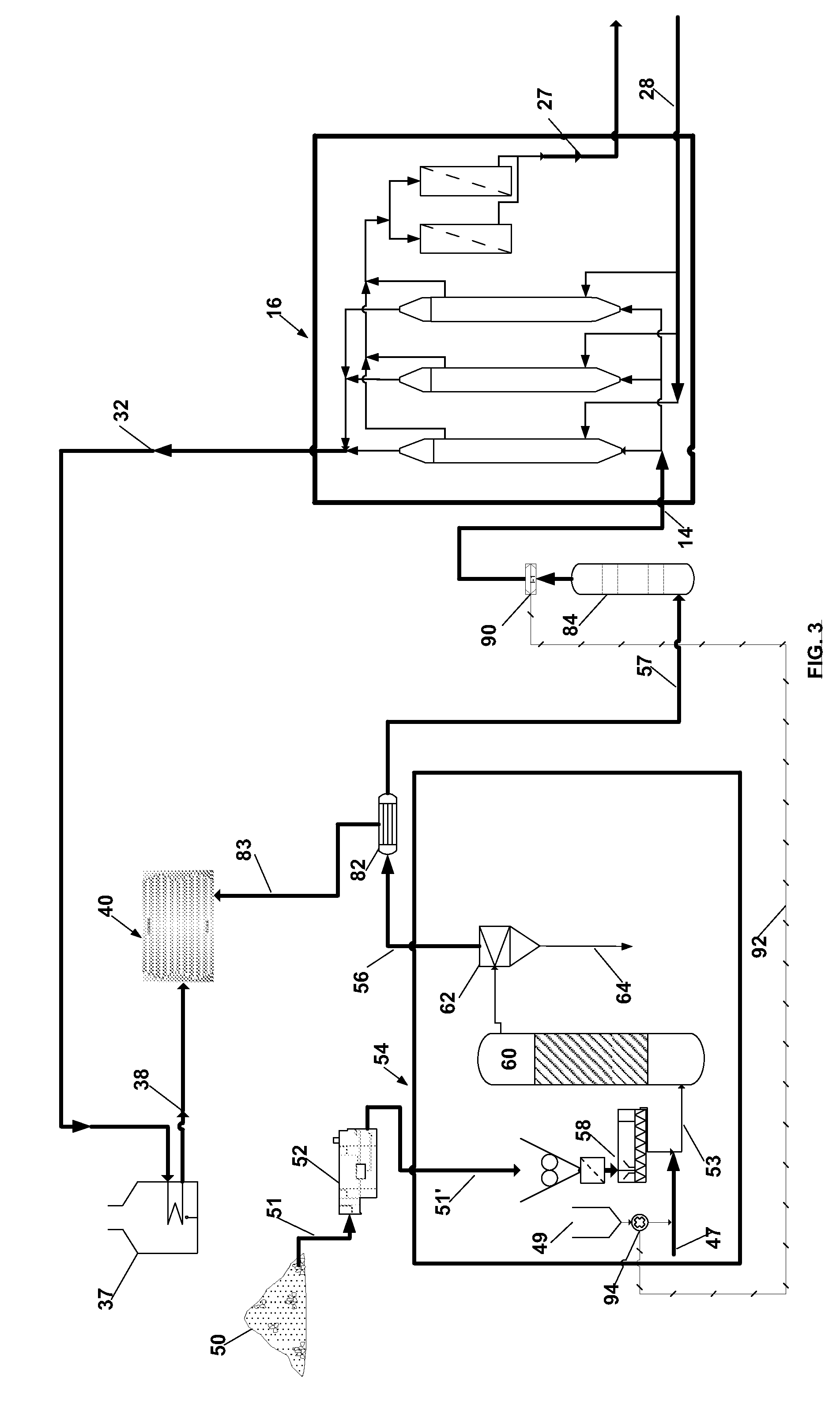Process for controlling sulfur in a fermentation syngas feed stream
a technology of fermentation syngas and feed stream, which is applied in the direction of waste based fuel, gas dust removal, and combustion gas production, etc., can solve the problems of inability of conventional yeasts to ferment c5 sugars to ethanol, inability to readily fermentable carbohydrates, and inability to convert bioconversion. , to achieve the effect of reducing the cost of bioreactors, reducing the cost of operation, and efficient separation of sulfur
- Summary
- Abstract
- Description
- Claims
- Application Information
AI Technical Summary
Benefits of technology
Problems solved by technology
Method used
Image
Examples
Embodiment Construction
Background
[0002]Biofuels production for use as liquid motor fuels or for blending with conventional gasoline or diesel motor fuels is increasing worldwide. Such biofuels include, for example, ethanol, propanol, and n-butanol. One of the major drivers for biofuels is their derivation from renewable resources by fermentation and bioprocess technology. Conventionally, biofuels are made from readily fermentable carbohydrates such as sugars and starches. For example, the two primary agricultural crops that are used for conventional bioethanol production are sugarcane (Brazil and other tropical countries) and corn or maize (U.S. and other temperate countries). The availability of agricultural feedstocks that provide readily fermentable carbohydrates is limited because of competition with food and feed production, arable land usage, water availability, and other factors. Consequently, lignocellulosic feedstocks such as forest residues, trees from plantations, straws, grasses, and other agr...
PUM
| Property | Measurement | Unit |
|---|---|---|
| temperature | aaaaa | aaaaa |
| melting point | aaaaa | aaaaa |
| concentration | aaaaa | aaaaa |
Abstract
Description
Claims
Application Information
 Login to View More
Login to View More - R&D
- Intellectual Property
- Life Sciences
- Materials
- Tech Scout
- Unparalleled Data Quality
- Higher Quality Content
- 60% Fewer Hallucinations
Browse by: Latest US Patents, China's latest patents, Technical Efficacy Thesaurus, Application Domain, Technology Topic, Popular Technical Reports.
© 2025 PatSnap. All rights reserved.Legal|Privacy policy|Modern Slavery Act Transparency Statement|Sitemap|About US| Contact US: help@patsnap.com



